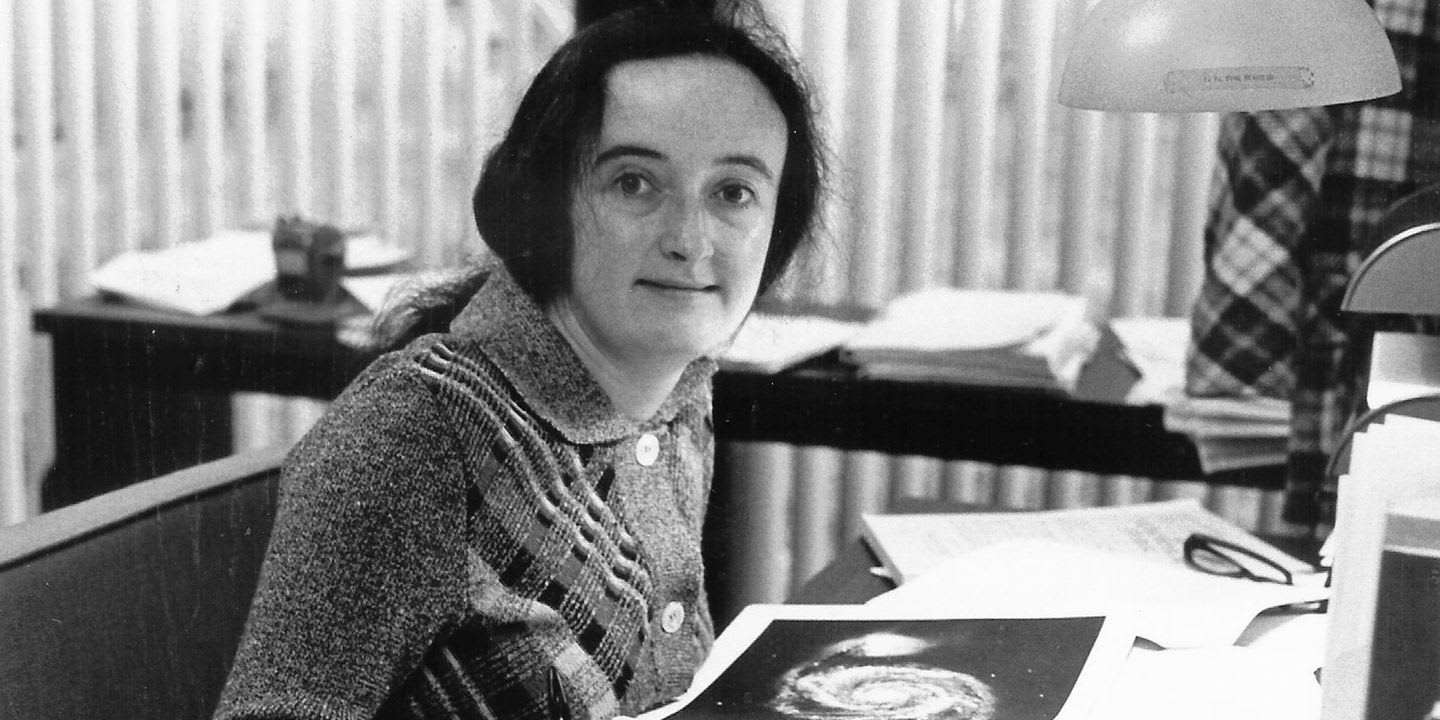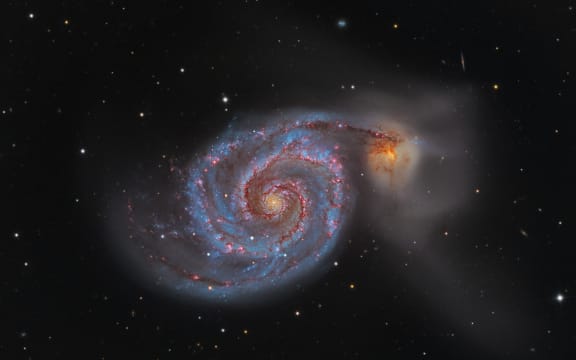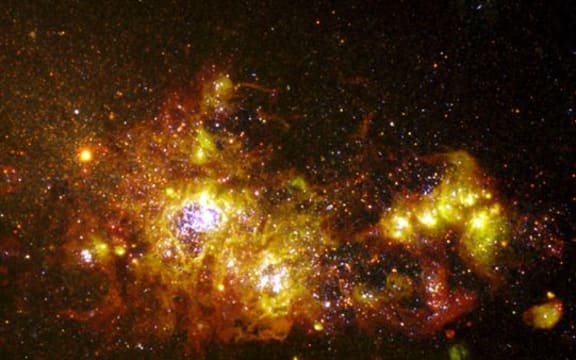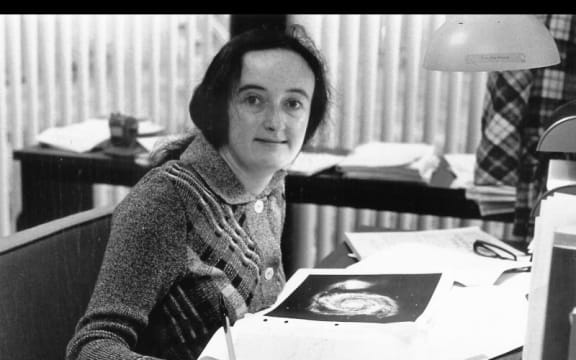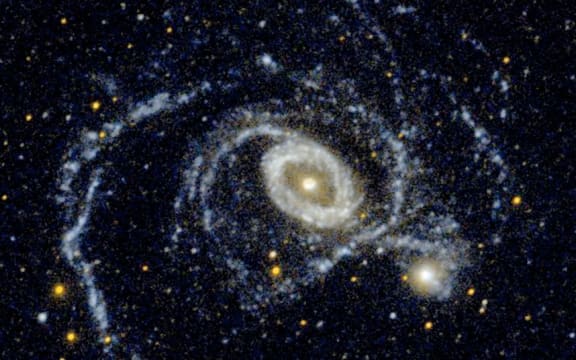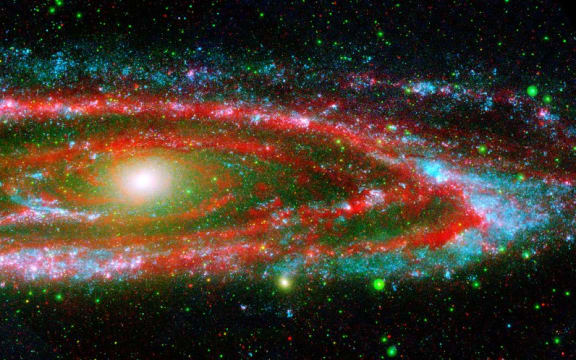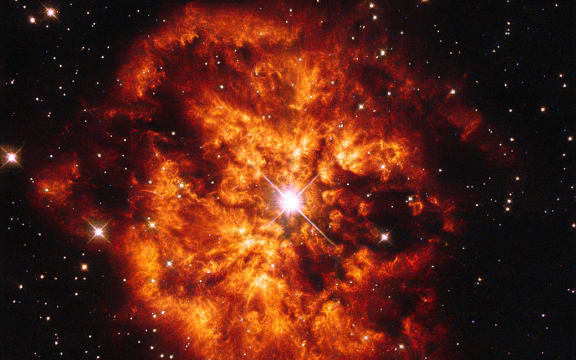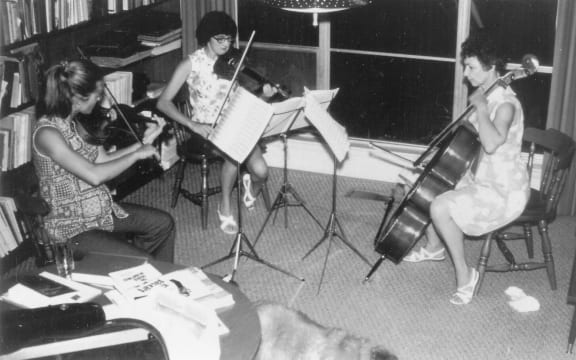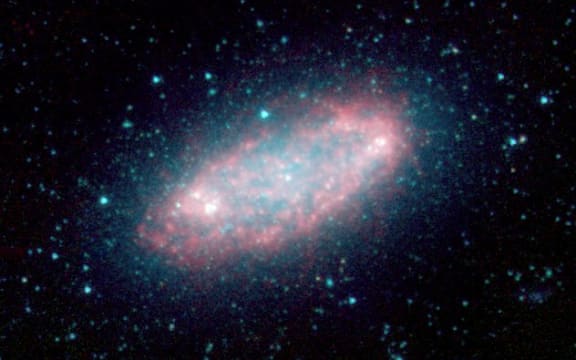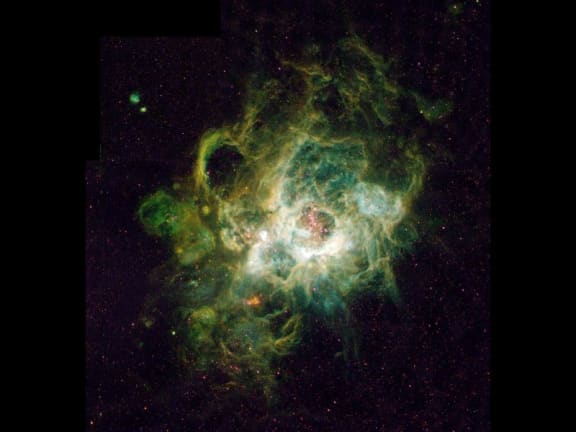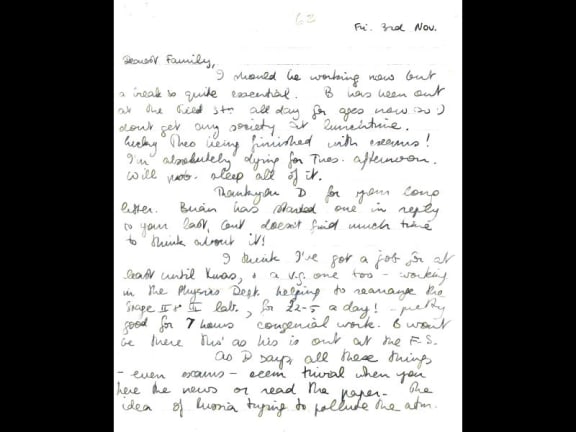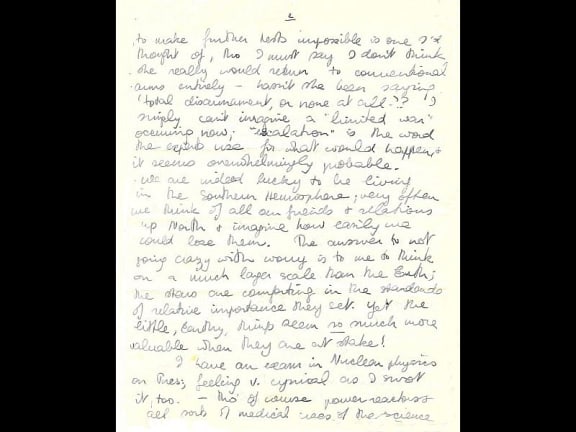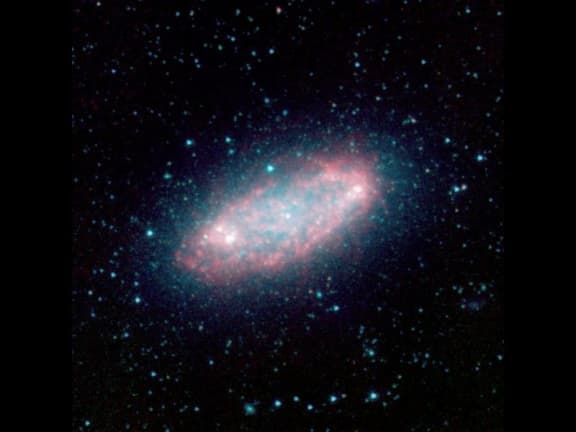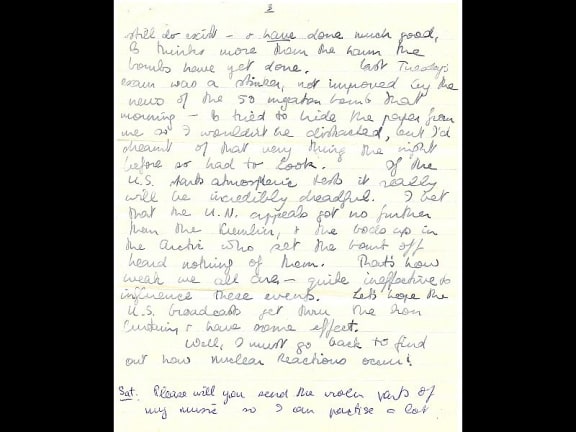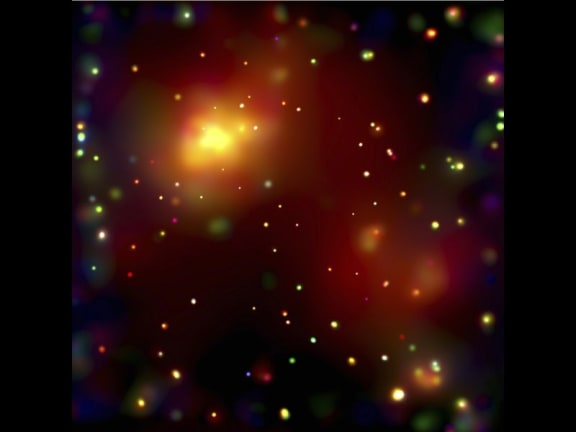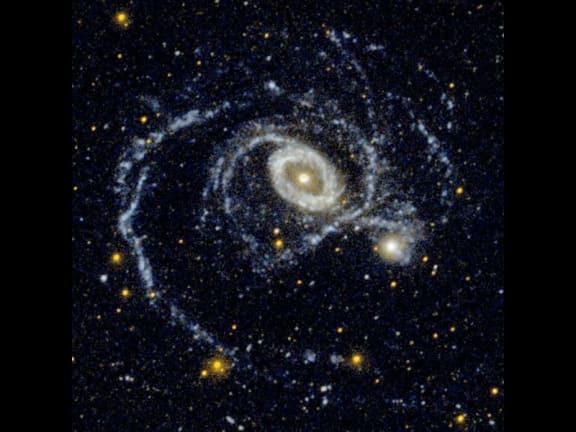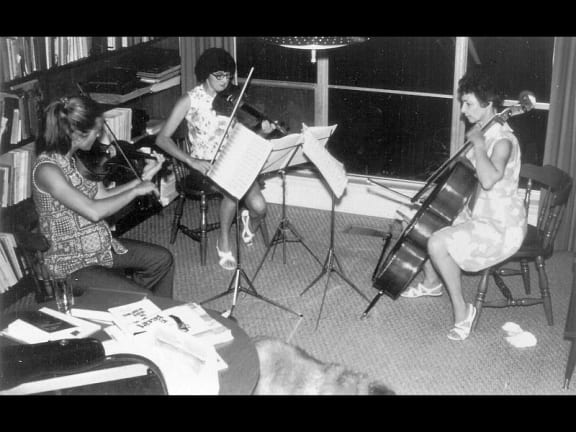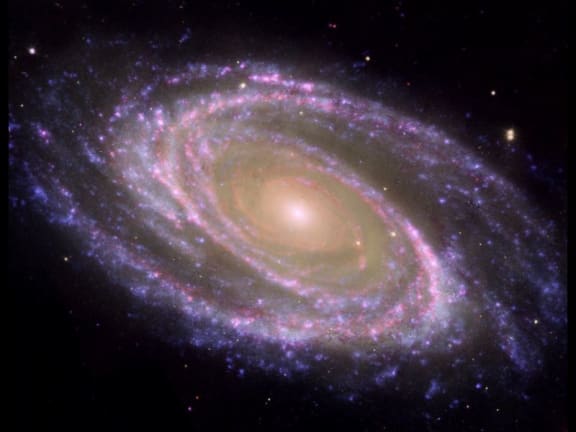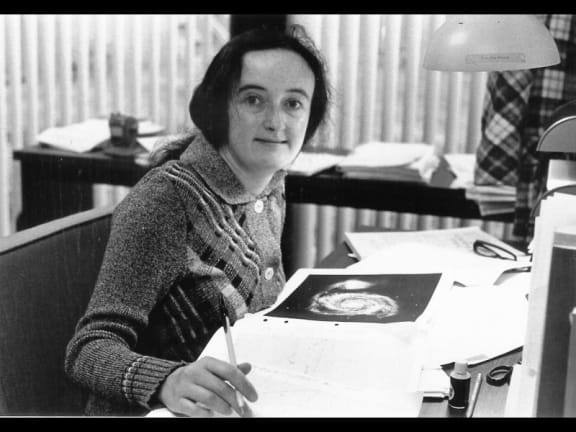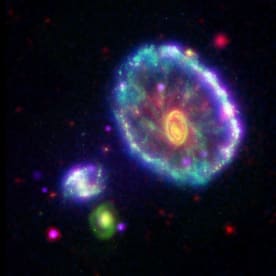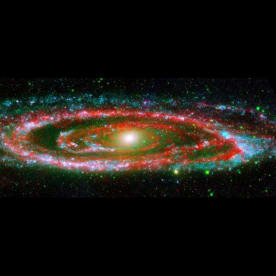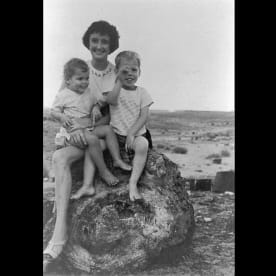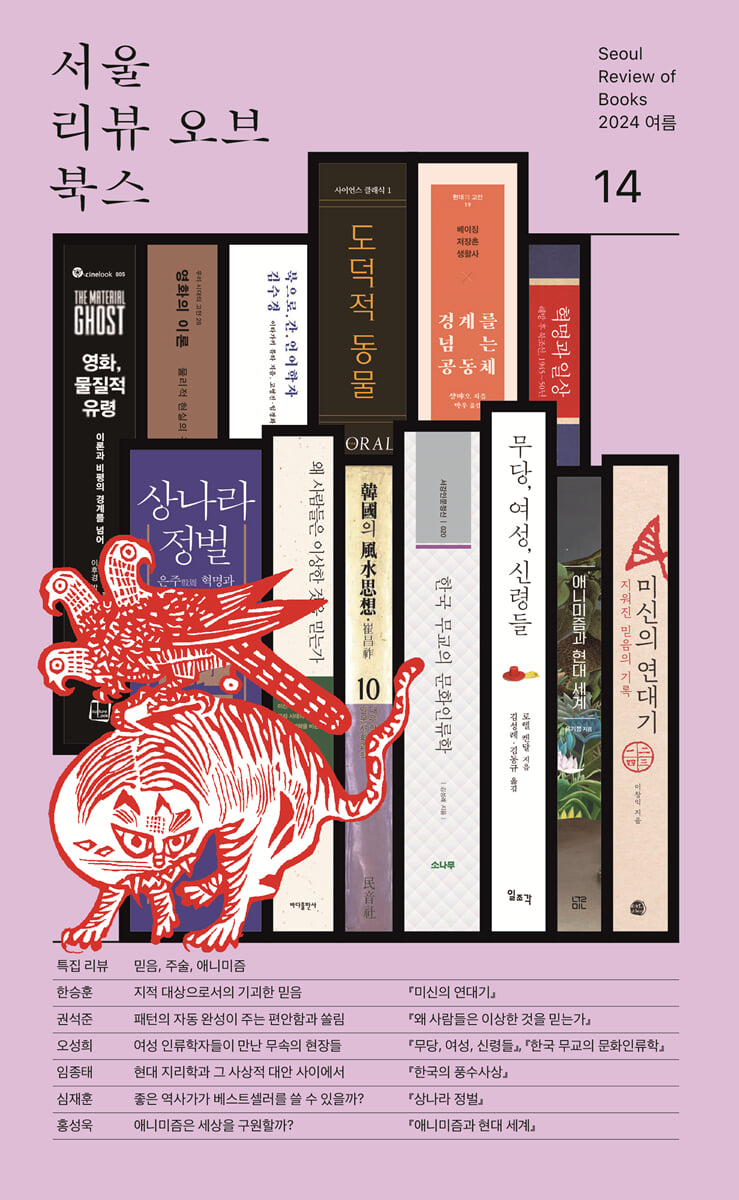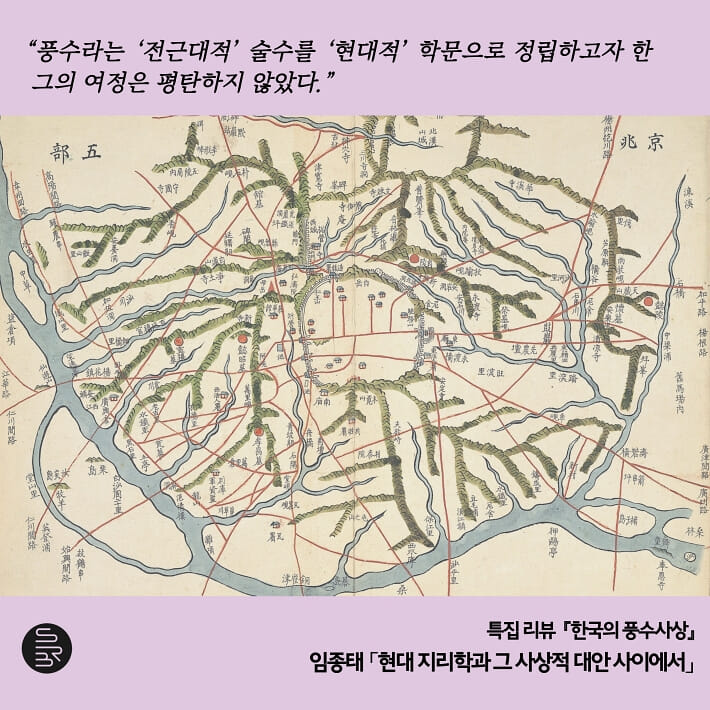Transcript
0:00
Today I'm walking the trail from Lake Tekapo up to Ōtehīwai, Mount John. It's a few hours inland from
0:06
Christchurch, New Zealand, and a place I used to come a lot as an undergrad studying astronomy at
0:10
the University of Canterbury. At the top of this hill are some of New Zealand's biggest telescopes,
0:15
and so I wanted to take this chance to talk about one of New Zealand's greatest astronomers.
0:21
She changed the study of galaxies forever, and she was the first to grasp that galaxies, just
0:27
like the stars within them, evolve with time. We are lucky to be able to look at pictures of space,
0:33
like recent ones from the JWST, and know a little bit about what we're looking at. Each
0:39
dot is a galaxy. That's an unfathomable truth, given how large our own galaxy is.
0:46
And much of the science that goes on today, trying to understand these dots, was spearheaded by an
0:52
astronomer from a small New Zealand town. Her name was Beatrice Hill Tinsley. She
0:57
was a trailblazer. And as I walk up this hill today, I'm going to share with you her story.
1:10
Much of what I know about Beatrice I've learned in this book, Bright Star by
1:14
Christine Cole Catley. It was a hard book to find. I got this copy from an old and
1:18
rare bookstore in Otago and it happens to be an old library copy. And it's a shame
1:23
this book isn't more popular because I think that more people should know about Beatrice.
1:29
She was born Beatrice Hill in England in 1941, but came to New Zealand as a baby
1:34
and grew up in New Plymouth. As a young girl, there were a few books about astronomy that
1:39
really fascinated Beatrice. One in particular was Fred Hoyle's The Nature of the Universe,
1:45
which asked questions such as, how was the universe created?
1:51
At age 14, Beatrice was hungry to know more and asked to borrow some physics textbooks
1:56
from her school teacher's bookshelf. She worked through them by herself. A couple of years later,
2:02
that same teacher was injured in a car accident just weeks before the
2:06
school's final exams. Beatrice led her class to study without their teacher,
2:11
and in the final exam, the students got excellent marks.
2:15
This teacher later said that very occasionally, you realize you're dealing with a mind that is
2:20
infinitely superior to your own. Beatrice came into that category. I would call her a
2:26
genius. Beatrice graduated at just age 16 from New Plymouth Girls High School with top marks in her
2:33
year, and she went on to study at the University of Canterbury, the same university I went to.
2:39
She didn't like rote learning and preferred to teach herself interesting ideas. In a letter
2:44
home from university, she wrote that she was sick of working for
2:48
exams and decided to sit in the back of lectures and work on learning new maths
2:53
rather than listening to the lecturer mumble through calculus she had learned at school.
3:02
During her time at Canterbury, Beatrice decided that she wanted to be a cosmologist,
3:06
but that wasn't really a topic offered at the university at that time. This
3:10
observatory that I'm walking to now wasn't built when Beatrice was a student,
3:14
so she had to do a different research topic for her master's thesis.
3:18
Its title was Theory of the Crystal Field in Neodymium Magnesium Nitrate.
3:23
Even though it wasn't the topic that she was passionate about it gave the added benefit
3:28
of giving her skills using a computer, and she was one of the only people in
3:31
the country who got those kind of skills, and that helped her later in her career.
3:36
She got all A's at university and was the only woman in physics at master's level.
3:41
She also won every academic prize available to her, including the Haydon Prize for Physics,
3:47
which I also won 55 years after her. I do feel connected to Beatrice in lots of little
3:52
ways. And she also won a postgraduate scholarship to continue her studies.
3:58
However, her path after university wasn't so streamlined, and she faced many difficulties
4:03
in continuing her studies. She got married at age 20 to fellow physics student Brian Tinsley.
4:09
They moved together to Dallas, Texas. At the time, there were anti nepotism
4:14
laws that prevented both a husband and wife from being employed at the same institution.
4:19
And Beatrice hadn't known this when she got married and felt betrayed. It prevented her
4:24
from continuing her research because Brian was already employed in Dallas. Feeling
4:29
like her potential was languishing, Beatrice took matters into her own hands and decided
4:34
to find somewhere that would let her do a PhD, even if it meant a long commute.
4:39
At the University of Austin, a five hour bus ride away, she managed to convince a professor to give
4:45
her a chance. They told her that most students struggled to complete the program in six years,
4:50
working full time, but she needed to do it part time, splitting her
4:55
time between Dallas and Austin. There is a comment in Catley's book about this time,
4:59
saying that Beatrice used her scholarship to pay for all the travel plus Brian having to
5:04
eat out half the week. This comment disturbed me a little, I guess it's evident that Brian
5:09
wouldn't be expected to cook for himself, and it doesn't sound like Beatrice also
5:14
got the luxury of eating out. It's only a small comment, but it does start to speak
5:18
to the realities of her married life, which she later described as being like a prison for her.
5:24
Regardless, she did very well at her PhD, and she astounded the professors and fellow students by
5:30
scoring the first ever 100 on an exam there. In a letter home to her New Zealand family,
5:36
she described the topic of her thesis by saying, I will be studying a whole
5:41
lot of different theories of cosmology to see which is best able to explain
5:45
the observations made with optical and radio telescopes on different galaxies.
5:50
The theories are based on Einstein's General Relativity. Around the time of starting to write
5:56
up her thesis, Beatrice was thrown a curveball. An unmarried member of her husband's family
6:01
became pregnant and at that time, the baby would need to be adopted out. Beatrice was
6:07
unexpectedly thrust into motherhood, feeling compelled to adopt the baby boy, named Allen.
6:13
She wrote up her thesis while taking care of the baby, and remember how I said most students take
6:18
six years to finish? Well, Beatrice made such impressive progress that she was able to finish
6:23
it in under three years. An examiner at her oral presentation said it was such powerful
6:29
work that they should simply award her the PhD then and there, without asking any questions.
6:35
Although they did continue to ask some, just to meet the formalities. So what was her PhD
6:42
work? Well, we can take a look at her thesis. Its title was Evolution of Galaxies and its
6:47
Significance for Cosmology. In it, she makes some of the first quantitative predictions of
6:53
how galaxies will change over time by looking at how the stars are evolving with time.
6:59
She showed that galaxy evolution is something that can be observed
7:04
and this was to grow into one of the largest subfields within the study of
7:08
galaxies. She looked at the process of star formation and at how those stars
7:14
would evolve and affect the recycling of dust and gas in the interstellar medium.
7:19
This would shape the fate of the galaxy itself and Beatrice was able to model this
7:24
interconnectedness. Previous to Beatrice's work,
7:28
it was thought that galaxies could be used as standard candles to measure distances in space
7:33
because they didn't change, but Beatrice showed that galaxies could dim with age.
7:39
This had profound effects on how astronomers came up with theories
7:43
of the fate of the universe. Without this insight, the leading theory had been that
7:48
the universe would collapse in a big crunch. Taking into account the changing nature of
7:54
galaxies meant the data now looked more in favor of the universe expanding forever.
8:00
Further observations 30 years later using supernovae instead of galaxies
8:05
as those standard candles were to show that the expansion of the universe was
8:09
in fact speeding up under the influence of what astronomers call dark energy.
8:16
Despite producing a great PhD in record time, Beatrice felt deflated after this achievement.
8:22
She returned to Dallas with no job prospects. She did apply for some
8:26
grants to try and continue her research from home and had short visiting stints at
8:31
places like Caltech. She also adopted a second child, Teresa. From all that I've read so far,
8:37
it is clear that Beatrice loved her children and did all she could to put them first.
8:42
It's also clear that these years post PhD were a real struggle for her personally. When she'd
8:48
moved to Dallas for her husband's job, it had been with an understanding that it would only
8:53
be temporary. But nearly ten years later, she was still waiting for her turn to start her career.
9:00
Everyone that met Beatrice could see her potential and see how bright she was.
9:04
After a long time struggling, she knew that getting a divorce from Brian would
9:08
be the only way that she could shine. She was offered an academic position at Yale
9:13
and wanted to take the children with her, but Brian didn't want her to. To avoid the
9:18
children being fought over in court, she gave way and moved to Yale on her own,
9:23
continuing to visit and help with child care arrangements when she could.
9:27
These aren't the kind of details I usually mention too much in my videos,
9:30
and a case of people splitting up and having children live with one parent is an extremely
9:35
common occurrence. In this case though, Beatrice seems to have received quite a lot of criticism
9:40
on the matter. Her daughter Teresa was later quoted in a New York Times article saying that
9:45
even though it was painful, she was proud that her mom stood her ground and followed her career.
9:51
Moving to Yale, Beatrice finally got to work on the questions that she had
9:55
been inspired to answer as a child, reading Hoyle's book about the origin
9:59
of the universe. One of her papers was featured in Time magazine, which is why she posed for this
10:05
photo shoot at the Blackboard. She published over 100 papers, and looking through them, you can see
10:11
topics like chemical evolution, abundance ratios, metallicity distribution, and even dark matter.
10:18
These are all topics that make up the modern field of galactic astronomy,
10:22
and Beatrice was involved in all of them. Her most impactful paper was published in
10:27
1980 called The Evolution of Stars and Gas in Galaxies. It received thousands of citations
10:34
and its longevity is seen in the fact that papers published this year are still citing it.
10:39
In it, Beatrice describes different aspects of galactic evolution such as
10:43
gaseous inflow and the composition of the interstellar medium. She calls them pieces
10:48
of a jigsaw puzzle that may someday be put together. Another notable achievement of
10:54
Beatrice's was that she organized a big galaxy conference at Yale in 1977, which
11:00
has been described as the single most important galaxy conference in the history of the subject.
11:05
She also became Yale's first female professor of astronomy. But at the height of her career,
11:11
this story took a tragic turn. Just a year after becoming a professor,
11:15
she noticed a bleeding mole on the back of her leg that she had
11:19
previously ignored. She was diagnosed with melanoma and underwent treatment.
11:23
During this time, she still kept busy and looked after Teresa, who had come back to live with her.
11:29
Beatrice continued to work throughout her illness,
11:32
but over the course of a few years, became very sick as treatment failed to save her.
11:37
Her PhD students visited her bedside and she helped them with their work.
11:41
She continued to work on her own research too, and wrote her last paper from her bed
11:46
in the Yale infirmary. She had to learn to use her left hand in order to write
11:50
it out. It was called Chemical Evolution 4, Some Revised General Equations. It was
11:58
submitted 10 days before she died, in March 1981, and it was published after her death.
12:05
It includes calculations showing how to separate living stars from dead remnants,
12:10
and thus making models more consistent.
12:24
That building over there is where the astronomers work today. And inside there's a small library
12:29
with a bound copy of Beatrice's PhD thesis. As an undergrad I got to stay there and
12:34
meet Alan Gilmore and Pam Kilmartin, who, using one of the telescopes here,
12:39
discovered an asteroid in August 1981 that they named Beatrice Tinsley.
12:44
Beatrice's father, Edward Hill, called it a kind of moving tombstone. There are some other
12:49
small traces of her legacy across New Zealand, like this street in Auckland named after her,
12:55
and Mount Tinsley near Queenstown. But still, many New Zealanders don't
12:59
know about Beatrice, and her impact on our understanding of the big questions.
13:03
Beatrice was friends with Vera Rubin, whose work on galaxies provided key evidence for
13:08
the existence of dark matter. I'd like to end with Vera's words about Beatrice. She said,
13:14
Even in her all too brief a life, Beatrice was one of the giants of astronomy in the 20th century.
13:20
There is no telling how much more we might have learned if she had had a longer time to teach us.
13:26
While researching for this video, I saw that Christine Catley's daughter, Nicola Scott,
13:31
is currently driving an attempt to make a movie about Beatrice, based on her mother's book. I
13:36
hope this goes ahead, and that Beatrice's legacy can continue to shine on. Thank you for watching,
13:42
and thank you to my Patreon supporters for making these videos possible.
13:46
A special shout out to today's Patron cat of the day, Thorin.

